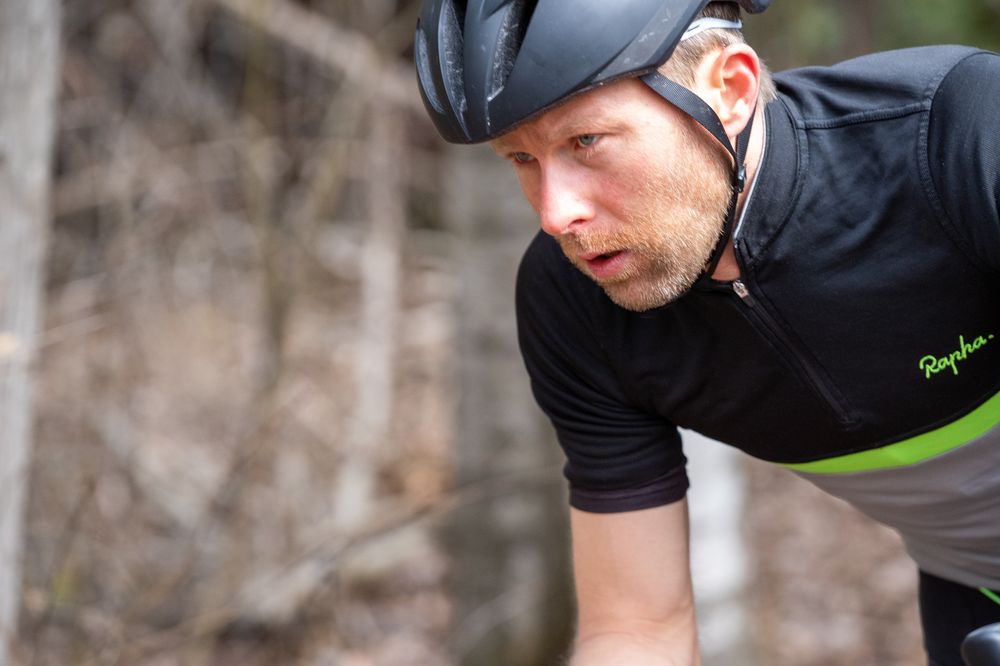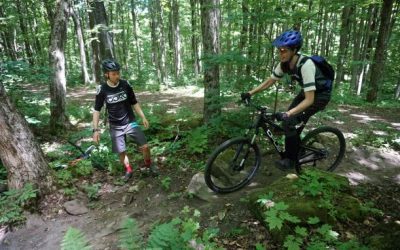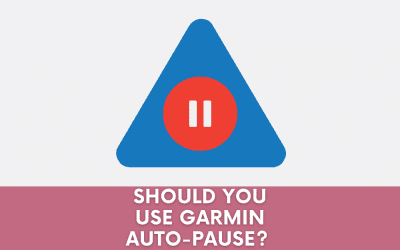Whether you want to thrive in a road group ride or shred the local single-track, where you are looking will determine much of your success: Vision and attention are critical. New riders can not process information as quickly because they don’t know what they are looking for so they try to process a lot of information and while also thinking through movements that are not yet automatic. So while an elite rider sees a log with a left-hand corner to hop over while entering from the right a newer rider might not know to look for the corner coming up and focus on bending their arms to compress the suspension fork and lift their front wheel before realizing they missed the corner after the log!
The search for information and taking action on this information is what our training will ultimately build over time but like any skill, I think we can practice vision to help improve our results recognizing that many years go into building expert performance.

In a clinic, Peter talks about looking past a drop off and how that influences the movement on the drop
Where Are You Looking?
“Look Where You Want to Go” is perhaps the most cliched sports coaching advice … there is truth in many cliches.
I like to break this cliche into the ideas of Vision and Attention (see the book “A Twist of the Wrist” for more on this concept and motorcycle riding!)
Vision – where you are looking
Attention – what you are ‘attending’ to or giving attention to
You can practice vision/attention right now while you read this amazing article. Can you attend to what the person sitting beside you is doing? Can you see your hands holding your phone or on the keyboard? Can you see someone on the other side of the room while you keep your eyes on these words? That’s attending to your surroundings while continuing to use your vision for the task at hand.
A recurring problem that athletes run into is not paying attention to the right things and failing to keep looking at the right things at the right time.
Where should I look?
This is a moving target but I like the answer ‘as far ahead as you can’ because if taken correctly it implies you are always searching for what is next. The danger is that the rider doesn’t shift their gaze further ahead as next becomes what is ‘now’. You must also be shifting to things that are closer that might require vision and attention for a moment. You might have to set your line on a log hop before shifting your gaze to where you will land and what comes after the log. These things that are ‘next’ will also help you adjust what you do now (e.g. your line or speed or position might change if you find out that the log is followed by another log or a sharp corner or a low branch. Can you think about how that information might be helpful to your log hop? You have to deal with where you are AND where you want to go!
Imagine you are cornering on your road bike. When you are cornering, you can be looking through/around the corner to spot your exit. While you look through the exit you could also be attending to riders beside or ahead of you, a crack in the road, an oncoming car, the turtle crossing the road or the cracks in the road. These things you attend to are passing checks and providing information that might help you adjust your strategy.
If you were to shift your vision (or even to turn your head) to look at the cyclist beside you or the scary rocks on the side of the road, where would you expect your bike would go? Your bike will likely follow that gaze and you will lose your line. If you find yourself riding off the side of the road or off the side of berms it is possible that vision and attention are worth playing with. Try having someone film you to see what you are looking at, sometimes it is quite obvious that you are looking at the outside of the corner!
Learn to scan the trail
Trail Scanning is the mountain bike coaching cliche for moving your gaze around and actively searching for information ahead of you. It is helpful because scanning implies an active search rather than a single spot you look for the entire ride. The same thing applies to riding on the road where you are scanning for cars, pedestrians, changes in the group, potholes and any tactical changes you need to anticipate.
Drop-offs that require you to get both wheels airborne are one skill that can have drastic differences by shifting vision from the scary drop-off (usually wood/rock) to where you want to land. While this is an advanced and risky skill (e.g. start with a short curb!) the shift of thinking about what you are doing on the drop off (e.g. put your butt back) to where you want to put the bike (e.g. put the front wheel past this root) tends to allow the athlete to achieve better results. This is a shift from thinking about your body (internal) to what you want to do (external).
Great riders do this without thinking and do not process ‘irrelevant cues’ like the trees or spectators they are speeding past. They are listening, looking and feeling all the aspects of the trail as they make decisions about their line choice, their position and the forces they put into the pedals, handlebars and the seat.

In a group do you look at the wheel ahead or the helmet and road ahead – try it with this image can you scan ahead vs. look at the riders ahead – do you see the gaps opening or the shift in the road ahead?
DRILL IT
Get out on a ride and practice looking ahead and scanning the road/trail. Can you think ‘what is next?’ for a whole section of trail?
If you riding in a group, can you look past the riders ahead but also attend to their actions? Do they pedal smoothly or are they standing up to hop a pot-hole or coasting to stop? Riding in a group can be challenging because you have a lot competing for both your vision and attention. [Try this in the image above]
Ride faster. This will immediately challenge your processing speed. Try doing over-speed intervals where you do a 20-40 sec section of trail as fast as you can. I call these Van Der Poel’s, I will let you figure out why!
Ride more technical and variable terrain. I am always reminded of the need to scan ahead and keep my head up by riding technical, rocky areas that demand you have a plan that includes the next few corners and asks you to do something a little harder now to make the corner ahead possible. Beginners will take the easy option before them and walk the following corners.
Want to learn more about why skills on the bike matter? Check out our book, Becoming A Consummate Athlete, right here:






